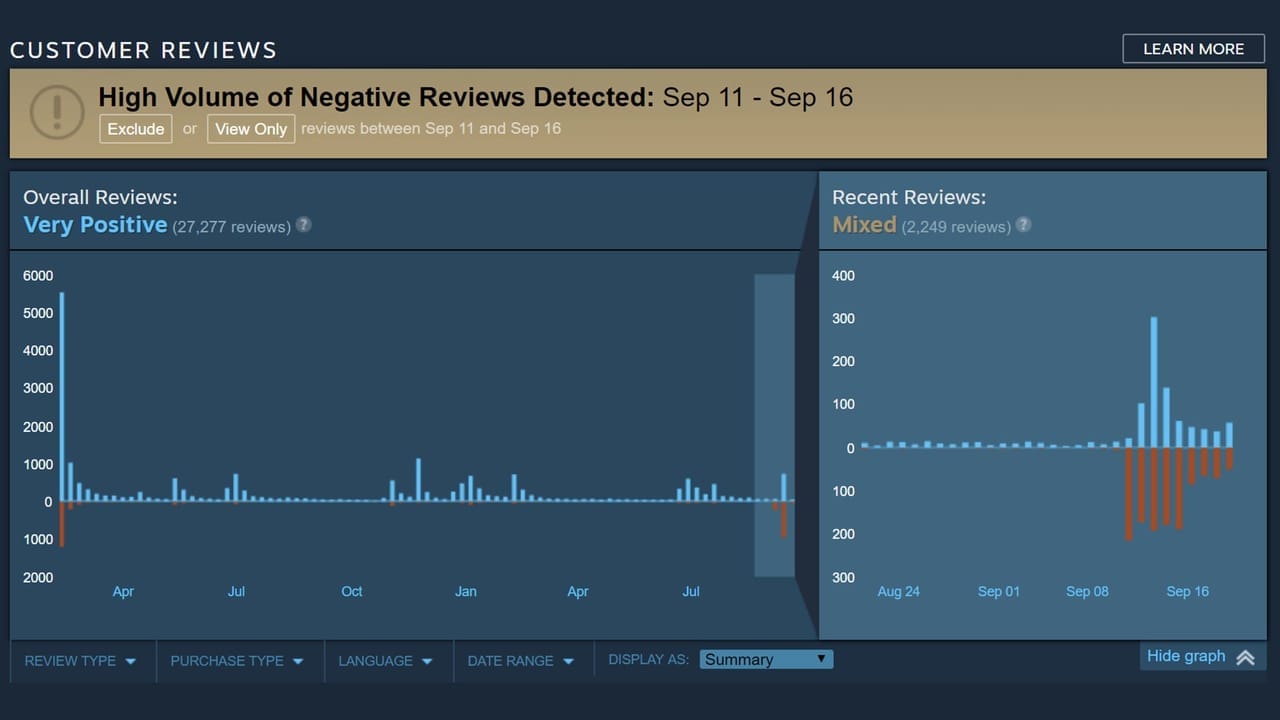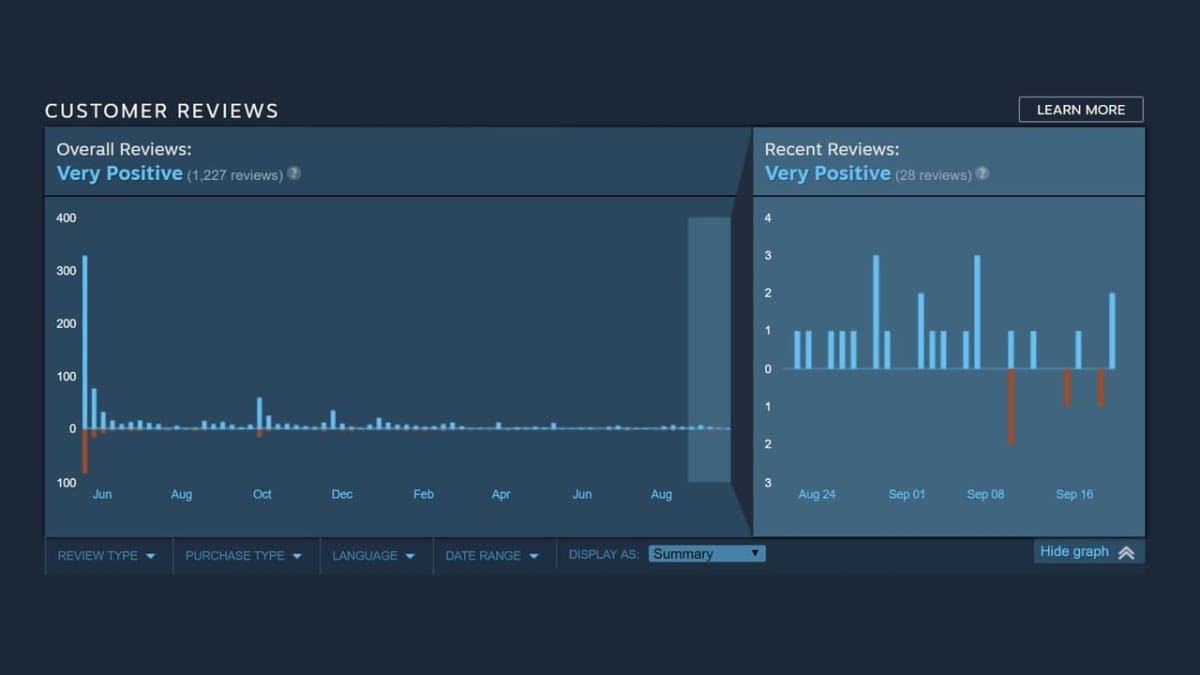Valve has added histograms to Steam reviews in order to combat review bombing according to a post on the Steam blog.
A histogram is simply a type of a bar graph that shows the distribution of samples over a period of time. In the case of reviews, it shows the positive and negative reviews over time (represented as blue and red bars) with larger bars representing larger numbers of reviews in the same period of time. Review bombing is the practice of a large number of (often negative) reviews being made on a product in an online environment.
Valve studied the long-term effects of review bombs on the games on their digital distribution platform. In many cases, they claim the score of a game returned to its normal levels as time went on after the review bomb didn't take place. In the cases where it hasn't returned to normal levels, Valve has found that there may have been an issue with the game itself that may have caused the review bomb and hadn't been resolved by the developers.

A number of solutions were explored including changing how review scores are calculated on Steam or removing them entirely. Ultimately, Valve decided to go with implementing a histogram for each game in order to allow users to see the distribution of review scores over time. The average user could explore the histogram, notice a spike, investigate the cause of the spike during that period of time, and decide whether or not that particular issue was something that they felt would impact their purchase decision.
To see the histogram, a user has to simply scroll down to the area of a game's store page, go to the summary of reviews (after the system requirements and before the reviews themselves are listed), and click on "Show graph" on the bottom right of the summary.
Aside from empowering users to explore the distribution of review scores via the histogram, other potential uses have been noted aside from combating review bombing. For instance, a game run as a service (such as an MMORPG) might show a decline in review score in the latter part of its life, indicating that the game has changed in a way that has upset the player base. Valve will be monitoring the community discussion on review scores for the time being, and in the future, they are planning to shift towards more personalized review scores to better reflect individual users' tastes.
What do you think of Valve adding histograms to reviews to combat review bombing? Do you think review bombing is a legitimate avenue for consumer opinion in the realm of review scores? Let us know in the comments below!






